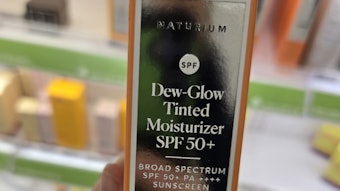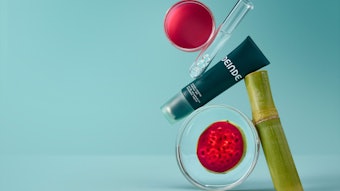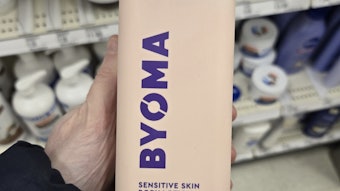Hands are the principal tool of human exchanges, and each individual’s hands encounter different environments and handle different materials. Moreover, they are the key and richest source of sensorial tactile perceptions, i.e., rough, even, cold, warm, soft, hard, etc. Hands also frequently provide symbols and perceptions of human personality, energy and mood, and because these multitasking tools are easily soiled, they must be frequently cleansed.
Hands use human muscle energy to apply mechanical action to surfaces, bodies, instruments and machinery. They have a complex structure. The palm and the fingertip contain one of the densest networks of nerve endings of the body. Skin morphology is unique in the palm area: It is glabrous, relatively thick and lighter than the skin of other body parts. It is covered with papillary ridges, acting as friction pads. The hairy skin of the dorsal site is thin, soft and pliable. The border tissue around the fingernail structure, called the paronychium, is thin and easily inflamed. It can host a high bacterial charge that may induce painful reactions. The structure of the hands is complicated by aging, which further aggravates dryness, skin thinning, fissures and anelastic behavior.
No ideal hand care product profile seems to exist but there are some common elements that can guide formulation strategies for this specific site. First of all is the need to soothe and control the intense and sometimes painful skin dryness following the frequent use of cleansing products, which is especially true for the aging population. In other cases, there is a need for equalizing uneven blood flow in the extremities that occurs with changing temperature and leads to intensive and variable reddening. Dark spots on the back of the hands are also a frequent problem, mostly resulting from skin aging and sun overexposure. Further, increasing consumer awareness about the daily risks of bacterial and mycotic contamination when touching soiled surfaces, human bodies and common objects has given rise to a large variety of hand sanitizers, all claiming long-lasting hygiene and bacterial protection. These worries concern both men and women, leading to formulations that should sensorially appeal to everyone.
Environmental and Occupational Aggressors
Generally, hands are exposed daily to changing environmental conditions, frequent delipidization processes, bacterial contamination, UV exposure and easy disruption of the hydrolipidic barrier. All this noticeably influences the skin condition of the hands, leading to extreme dryness, friction, painful stretching/compression movements and formation of spots and freckles.
When one’s occupation further repeatedly exposes hands to solvents, including warm or cold water, surfactants, oils and chemically aggressive substances, the structure of keratin can be severely damaged and the skin barrier highly impaired. This exposure may lead to irritation, extreme dryness, desquamation and elasticity loss accompanied by pain. Successive contact with substances that may penetrate deeply through skin fissures may result in permanent allergies.
Even simple cleansing with aqueous solutions of surfactants including alkaline soaps, synthetic detergents or cationic disinfectants can damage the skin barrier and increase transepidermal water loss. These consequences are proportional to the frequency of contact, concentration of surfactant and incomplete rinse-off. This is evident, for example, with health care professionals who are constantly subjected to intensive hand cleansing to maintain hygiene. It is also seen in professionals who frequently handle detergents and heavy duty cleaners. The reduced skin barrier allows for easier penetration of harmful substances and ultimately increases the potential for irritation and allergy.
Hand Creams
Basic structure: An emulsion’s physical form provides emollients, functional active principles and the water content required in a hand cream. Emulsions impart short- and long-term moisturization effects, i.e., plasticity, elasticity and keratin softness. O/W emulsions are found more in hand creams, while w/o systems, although suitable when barrier creams are required, are less often encountered. The o/w emulsion structure is preferred due to the immediate skin cooling, wetting and moisturizing benefits of its aqueous phase. These are accompanied by an increased perception of skin adsorption during massage resulting from evaporation and absorption of the external phase. Emulsion viscosity is known to be strictly and proportionally related to the relative amount of the internal phase. After distribution and massage, the final residue should leave a velvety, non-greasy and non-slippery feeling, mainly on the palms.
Considering the different surface structures of the two hand sites, ideally one should formulate products differently for the back of the hands vs. the palms. This, however, is not practical, so current products on the market aim to compromise between the needs of both sites. Usually, the water phase is approximately 70–85% and the aqueous solution contains 2–6% of hydrotropes like glycerin, xylitol and propylene glycol to provide immediate water coordination to the skin surface. Hand cream emulsions also contain the usual sequestering agents, adequate thickeners to adjust the flow properties, some water-soluble actives and common preservatives.
Polymeric hydrophilic moisturizers like hyaluronic acid, beta-glucan and chitosan may be used. Also, aloe vera leaf extract provides soothing properties. When selecting actives, consider that hand creams are generally low-cost formulations, so the market will not allow for expensive ingredients.
Some example hand creams are shown in Formula 1 and Formula 2. Formula 1 uses traditional ingredients in a simple composition with soothing and oxygensensitive active ingredients.1 Formula 2 shows the use of polar synthetic esters to provide a cushiony feel, smooth application and light touch.2 Vegetal butter provides feel and slip; no water-soluble actives have been used in this case.
The key requirement for all additives in the aqueous phase is that they completely lack residual stickiness. The most common aqueous actives selected are small molecular-size moisturizers, osmotic protectants and soothing agents. Allantoin and panthenol, betaine and trehalose usually accompany the aforementioned hydrotropes. Urea has unique action in hand emulsions, as it contributes to increased water mobility and induces a keratoplastic effect on keratin of the stratum corneum, which provides a perceived skin-softening effect. Hydrolyzed vegetal proteins contribute to long-term protection from surfactants. When acceleration of cell turnover is required, as in anti-aging hand creams, alpha-hydroxy acids and vitamin C derivatives can be added, as shown in Formula 3.3
When the skin care market focused more on the content of skin’s natural moisturizing factor (NMF), it was handy for formulators to reproduce the NMF composition by dissolving partially neutralized lactic acid, sodium and ammonium salts, urea, amino acids, simple monosaccharides, glycerin and pyro-glutamic (pyrrolidone carboxylic) acid in water. However, the fancy name of this dilute complex generally did not justify its cost. Moreover, 90% of the actual skin moisturizing activity is obtained through the use of lipids. Today, emulsions based on the lactic acid-ammonium lactate buffer and urea show high and immediate efficacy against dry skin.
Oil phases: The oil phase of hand creams and lotions, approximately 15–30%, is important for obtaining the persistent relief of dryness, lipid restitution and emollient effect without an oily, fatty or sticky feel. While old recipes mainly relied on hydrocarbon blends mixed with branched chain esters and silicones, as shown in Formula 4, Formula 5 and Formula 6, more modern formulations contain blends of polar compounds. Silicones, added in almost all preparations, may prevent the whitening observed when o/w emulsions with high amounts of fatty alcohol are rubbed onto the skin. Formula 4 shows the association of different rheology agents such as quaternium-15 and xanthan gum.4 It also illustrates the importance of vegetal lipids combined with silicone and the usual traditional stabilizers/emulsifiers. Formula 5 combines water-soluble actives such as an osmotic protectant and vegetal-derived lipids, which were chosen to maximize the amount of vegetal-derived ingredients. The emulsion’s stability is ensured with a polymeric emulsifier and xanthan gum, a hydrophilic polymer known for creating an elastic network in emulsions at low concentrations.
In general, the ratio between solid and fluid emollients is around 1:2. Solid lipids are selected among the water-swelling types, i.e., stearic acid, cetostearyl alcohol, glyceryl myristate or glyceryl stearate, frequently in ternary combinations. These water-swelling solid lipids provide final grip after emulsion absorption. A small amount of waxes (0.5–5.0%) such as beeswax or microcrystalline wax might be added to provide film-forming properties without occlusion. The fluid lipids should contain a sufficient amount of: unsaturated esters, both synthetic or vegetal, e.g., meadowfoam seed oil, to fight skin dryness; silicone oils for emollient effects; and branched chain fluid polar oil for quick absorption into the skin (see Formula 6) and its w/o counterpart (see Formula 7). Formula 6 is an o/w formula characterized by an unusually high concentration of glycerin and the use of a cationic emulsifier, while Formula 7 is a w/o formulation that is rich in sensorial fillers (polymethyl methacrylate, sericite, silica dimethyl silylate) and soothing agents (zinc oxide, 18- -glycyrrhetinic acid). Branched chain esters exhibit better spreadability than mineral oils, making application easier. Volatile silicones may increase the perception of absorption.
Emulsifiers and spreadability: While w/o emulsions ensure good water resistance of the cream layer, although with some residual oiliness, o/w emulsions should contain emulsifiers that do not support easy rinse-off or re-emulsification of the protective film when in contact with water. This is achieved by using the minimal amount of emulsifiers possible, or by using polymeric emulsifiers like specialized carbomers or complex taurates. Traditional emulsifiers are the self-emulsifying glyceryl monostearate, which results in an approximate pH 7, in addition to fatty alcohol ethers and methylglucose esters, which could result in a more acidic formula. In some cases, cationic emulsifiers such as dimethyl distearyl ammonium chloride have been used, which provide perceivable conditioning effects. The electrical conductivity of these systems may develop a slight corrosive effect toward metallic alloys, e.g., gold and silver rings, with the development of black stains on the skin.
Emulsions must be fluid enough to easily distribute onto the hands and provide a light perception with an immediate refreshing effect, especially considering their frequent application several times a day. The limit layer must be thin, and the perceived absorption must be fast. To provide a silky and velvety smooth finish, some fillers such as aluminum starch octenyl succinate and magnesium aluminum silicate are added.
Lipid actives: Restoring the lipid barrier of the hands may involve the use of ceramides and sphingolipids, which are associated with cholesterol and triglycerides. Vitamins A and E, shea butter and avocado unsaponifiable fraction may provide soothing effects, as well as bisabolol.
Sun protection may be obtained using traditional sunscreens, and a minimum SPF 15 is suggested. Further, microfine titanium dioxide may contribute to visually perceivable skin lightening. Several other depigmenting agents may reduce the appearance of dark spots on the hands. Usually a combination of vegetal actives (e.g., glabridin) and whole plant extracts, skin whiteners (e.g., kojic acid palmitate) iron-sequestering agents (e.g., EDTA) and penetration enhancers, (e.g., isopentyl diol, dimethyl isosorbide) may be used. Phenylethyl resorcinola, an anti-oxidant with anti-tyrosinase activity, has been described as a more powerful skin lightener than kojic acid, as reported in a study of Asian subjects. In addition, dimethylmethoxy chromanyl palmitateb is said to fight photoaging and significantly lighten the skin. For dual-action, vitamin C and pro-cysteine, a precursor of the amino acid cysteine, may be combined to reduce melanin production by 50% while exfoliating melanin-rich cells, respectively. Molecules that develop during inflammation are involved in the formation of spots; therefore, skin lightening may also be obtained through anti-inflammatory substances such as rose extracts or salicylic acid. Ruscus aculeatus is frequently used as regulator of microcirculation.
Nail care and the softening of hangnails is obtained with vegetal butters such as shea and mango as well as sweet almond, argan, jojoba or essential oils.
Perfumes and antibacterial agents: Hands frequently absorb odors from food ingredients and the environment, and the function of scents in hand creams is to both hide these off-odors as well as support consumer compliance in using protective products. The intensity and odor profile of scents should promote the idea of cleanliness, soothing and care.
Reducing odor development also involves reducing the bacterial charge on the hands. In relation, aside from common antibacterial agents, alternative preservatives are becoming increasingly popular. Recently, 2-methyl 5-cyclohexylpentanolc and 1,2 decanediold have been presented as functional moisturizing and deodorant ingredients with accompanying antibacterial action. However, to avoid the risk of completely destroying the resident bacterial flora on the skin and leave the door open to the proliferation of pathogenic species, encapsulated probiotics have been developede that, after the skin has been sanitized by the cream vehicle and antibacterial agents, release probiotics to restore the protective resident flora. Controlled delivery is also performed by oleosomesf that release safflower oil and vitamin E in a time-dependent strategy after the vehicle dries on skin.
Barrier Creams
The industry is continuing efforts to formulate an effective barrier cream, as current versions only have temporary effects. Efficient barrier creams should avoid any contact between hands, skin and wetting fluids, irrespective of their chemical aggressiveness and solvent power. This would require a completely occlusive, stretchable and tear-resistant film, a condition that is not compatible with proper skin physiology and provides no advantages beyond those of rubber gloves. Typical ingredients of existing barrier creams are water-resistant, film-forming synthetic polymers and waxes. Solving the problem to allow skin to perspire without opening space through which externally applied fluids can contact skin is still a challenge. This could possibly be achieved with treatments that hydrophobically solvent-proof and modify the skin surface; i.e., a nanotechnology imitating the water repellency of lotus leaves.
Hand Sanitizers
The main goal of hand sanitizers is to kill germs and in factories where alcohol-based spray machines for hand disinfection were installed, the average health of workers was improved, as shown by a reduction in sick days.5 Such sanitizing products also incorporate the sensorial attributes of traditional hand moisturizers, such as easy spreading, a smooth final touch, and the lack of stickiness and oiliness. Moreover, a quick-drying and rewarding cooling sensation are required. Therefore, it is easily understandable why hydroalcoholic fluid gels are the preferred physical form. Swollen, hydrophilic, alcohol-compatible polymers like carbomers are generally used. The alcohol amount can vary in the different formulae, but it is usually kept high (62–65%) to obtain maximum bacterial destruction.
Note that the U.S. Food and Drug Administration’s tentative Final Monograph states that OTC antibacterial agents can claim bacterial reduction but not “bacterial killing”, “99.9% killing” or “elimination of specific pathogens, such as salmonella or E. coli.”6 Similar norms exist in the EU, where a skin disinfectant is placed outside the cosmetic world in OTC products.
Non-alcohol based products employ mild surfactants; vegetal antimicrobials, e.g., thyme, clove, eucalyptus and oregano oils; the skin astringent witch hazel extract; and vegetal soothing emollients—often aloe vera extract in a citric buffer. An example of this can be seen in Clean Well’s Alcohol-Free All-Natural Hand Sanitizer (formula not shown). The antimicrobial cationic benzethonium chloride is also used in alcohol-free formulations. Interestingly, according to a recent paper, Cinnamomum verum bark also provides high antibacterial activity; greater than the 12 other plant extracts studied.7
Innovations
For skin lightening effects, diacetyl boldineg is a novel technology that works via alpha-adrenergic antagonist receptors and calcium flow regulation. Also, to soothe and calm irritated skin in a new way, a synthetic lipopeptide with the sequence N-acetyl-tyrosylarginyl-hexadecyl ester claims to act as a messenger for the senses, providing comfort and cutaneous well-being while reducing subliminal unpleasant perceptionsh.
Soothing, restructuring and healing effects can be imparted via macadamia oil, which has a high content of palmitoleic and oleic acid. It also improves local microcirculation. Adansonia digitata (baobab) oil heals chapped hands while hardening nails.8 In relation, Goldfaden MD created Hands to Heart Anti-aging Plus Brightening Hand Treatment, combining hand cream properties with skin renewal benefits. It contains skin care actives such as CoQ10, niacinamide, glucosamine, retinol and hyaluronic acid, and claims to prevent hands from disproportionally showing their age.
Airless packaging was developed for Cosmo Laboratories’ Hand Revitalizer, which avoids the return of air to the tube after squeezing, helping to stabilize the active principles and insure complete dispensing of the content. The formula contains the company’s Nutricomplex, a blend of hyaluronic acid, to intensively moisturize skin, and colostrum, a cow secretion rich in growth factors that increases immune defenses against viruses and bacteria.
Similar efficacy is claimed by Lumson’s TAG or airless plastic packaging (APP) system, a squeezable plastic bag that fits into glass containers and is extracted after product consumption so the container can be recycled. The key advantage to this packaging is, again, that it reduces contact of oxygen-sensitive ingredients with the air, extending shelf life.
Finally, aligned with this natural trend, Dr. Bronner has developed Organic Lavender Hand Sanitizing Spray, an organic hand sanitizer with organic ethanol from non-GMO grain, organic glycerin and organic lavender oil. Its sanitizing efficacy is related to the alcohol content, while moisturization is provided by glycerin, and lavender oil provides nail-strengthening properties.
References
Send e-mail to [email protected].
- JP 03,161,417, Water-in-oil emulsified cosmetics in the form of creams of solutions, T Hikima and K Tokunaga, assigned to Kanebo (Jul 11, 1991)
- Soothing Hand Cream, Lipo Chemicals Inc., Skin Care Formulary, Cosm & Toil, 125(1) 61 (2010)
- Cosmetic Counter, Cosm &Toil 112 (3) 16 (1997)
- Hand & Body Lotions, leaflet from Dow Chemical USA, original form 192-971-87
- NO Hübner, C Hübner, M Wodny and G Kampf, Effectiveness of alcohol-based hand disinfectants in a public administration: Impact on health and work performance related to acute respiratory symptoms and diarrhoea, BMC Infect Dis 10 250 (2010)
- Federal Register Notice: Tentative Final Monograph for OTC Healthcare Antiseptic Drug Products (Jun 17, 1994)
- L Mayaud, A Carricajo, A Zhiri and G Aubert, Comparison of bacteriostatic and bactericidal activity of 13 essential oils against strains with varying sensitivity to antibiotics, Letters Appl Microb 47 167–173 (2008)
- Baobab Oil, PhytoTrade Africa, www.phytotradeafrica. com/products/baobaboil.html (Accessed Mar 25, 2013)










